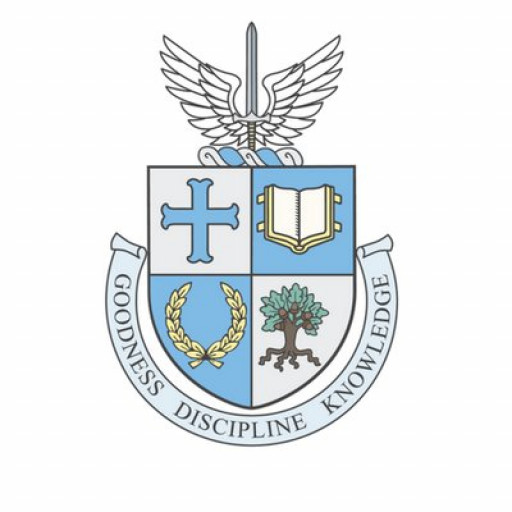Photos of university / #sheridan_college
The Bachelor of Fine Arts in Design at Sheridan College offers students a comprehensive and immersive educational experience that prepares them for a successful career in the dynamic and competitive field of design. This program emphasizes both creative development and technical skills, fostering students' ability to think critically, innovate, and communicate visually across a variety of design disciplines. Throughout their studies, students engage with fundamental principles of design, including color theory, typography, layout, and digital media, while also exploring specialized areas such as graphic design, branding, user experience (UX) design, and interactive media. The curriculum is designed to promote hands-on learning through studio-based projects, collaborative assignments, and internships, providing real-world experience and industry connections that are vital for professional growth. Sheridan College's state-of-the-art facilities, including design labs and digital studios, support students in experimenting with the latest tools and technologies, ensuring they stay current with industry standards. Faculty members, who are themselves active professionals and experts in their fields, mentor students and inspire innovative thinking. The program also encourages students to develop a strong personal voice and a versatile skill set, enabling them to adapt to various sectors within the design industry. Graduates of the Bachelor of Fine Arts in Design are well-equipped to pursue careers in graphic design, advertising, branding, digital media, and other creative fields, or to continue their education through graduate studies. Sheridan College’s focus on practical experience, industry engagement, and creative excellence makes this program an ideal choice for aspiring designers eager to make a meaningful impact in the visual communications industry.
The Diploma in Design at Sheridan College is a comprehensive program dedicated to cultivating the creative and technical skills necessary for a successful career in the design industry. Throughout the course, students are introduced to a broad spectrum of design disciplines, including graphic design, digital media, and visual communication, enabling them to develop a versatile skill set adaptable to various fields. The curriculum emphasizes both theory and practice, ensuring students gain a solid understanding of design principles such as layout, typography, color theory, and user-centered design. Students engage in hands-on projects that simulate real-world scenarios, fostering their ability to develop innovative solutions for clients and users alike. The program also incorporates training in industry-standard software applications, such as Adobe Creative Suite, to prepare students with the technical proficiency required in today’s competitive job market. Collaborative work is highly emphasized, encouraging teamwork and communication skills critical for success in professional environments. Faculty members bring extensive industry experience and provide personalized mentorship to help students refine their portfolios and develop a unique design voice. Sheridan College’s state-of-the-art facilities, including dedicated studios and digital labs, offer an inspiring environment for creative exploration and experimentation. In addition to technical skills, the program emphasizes critical thinking, problem-solving, and the ethical considerations of design practice, ensuring graduates are well-rounded professionals ready to contribute to a diverse range of industries, from advertising and branding to digital media and beyond. Graduates of the Design program are equipped to pursue careers as graphic designers, digital media specialists, brand strategists, or further their education in related fields. The program’s combination of rigorous coursework, practical experience, and industry engagement makes it an ideal choice for aspiring designers seeking to make a meaningful impact through their creativity.
Program Requirements:
To be admitted to the Bachelor of Design program at Sheridan College, applicants must demonstrate a strong interest and aptitude in creative design fields. Prospective students are typically required to have completed a high school diploma or equivalent with a solid academic record. A portfolio review is a critical component of the application process, showcasing the applicant’s creativity, technical skills, and design thinking abilities. The portfolio should include a variety of work that reflects the applicant’s interests and versatility in design, such as sketches, digital designs, projects, and other relevant creative work.
In addition to the portfolio, applicants may need to submit a detailed application form, official transcripts, and a statement of interest or personal essay explaining their motivation for pursuing a Bachelor of Design and their career aspirations in the design industry. Some programs might also require references or letters of recommendation from teachers or industry professionals who can attest to the applicant’s potential and commitment to the field.
English language proficiency is necessary for international students, with minimum scores specified by the college, such as IELTS or TOEFL scores. Experience with relevant design software, such as Adobe Creative Suite, or foundational knowledge in visual arts and technology may be advantageous but are generally evaluated through the portfolio review rather than as formal prerequisites.
Academic prerequisites may include courses in art, visual communications, or related subjects if applying from a post-secondary background, although these are not always mandatory. For applicants who do not meet certain prerequisites, Sheridan College may offer preparatory or bridging courses to help bring students up to the necessary skill level.
Applicants should also be prepared for a possible interview or in-person assessment, where they might be asked to discuss their portfolio, design process, or ideas. Overall, the program emphasizes both creative talent and the ability to think critically and communicate effectively through visual means. Successful admission relies on demonstrating a strong creative foundation, technical proficiency, and a clear intent to develop professional skills in the design industry.
The Sheridan College offers a variety of financial aid options to support students enrolled in their Design programs. Tuition fees vary depending on the specific design discipline and whether students are domestic or international. Domestic students may qualify for government grants, loans, and bursaries, which can help offset the cost of tuition and materials. International students are generally responsible for higher tuition fees but can access some scholarship opportunities specifically designated for international applicants. Sheridan College provides numerous scholarships and awards based on academic achievement, portfolio quality, and financial need. Applicants are encouraged to review the college's official scholarship page to identify eligibility requirements and application deadlines. Additionally, students can explore external funding sources such as government grants, private scholarships, and sponsorship programs. The college also offers work-study opportunities, allowing students to gain practical experience while earning income to support their studies. Payment plans are available to help manage tuition payments over the semester, and some students may qualify for installment options. Cost considerations include tuition, notably higher for international students, along with fees for materials, supplies, and personal expenses. Students are advised to budget for these costs in addition to tuition fees. The college's financial support services provide counseling and guidance on applying for financial aid, scholarship opportunities, and budgeting strategies. Overall, Sheridan College aims to make education accessible by offering diverse financial support mechanisms, but students are responsible for actively seeking out and applying for available aid programs to minimize their financial burden during their studies in the Design discipline.
The Design program at Sheridan College offers students a comprehensive education in various aspects of design, emphasizing creative problem-solving, visual communication, and innovative thinking. Recognized for its practical approach, the program prepares students to excel in diverse fields such as graphic design, visual and media arts, illustration, and brand development. Students benefit from a curriculum that integrates theoretical foundations with hands-on projects, enabling them to develop a strong portfolio that showcases their skills and creativity.
The college employs experienced faculty members, many of whom are active practitioners in their respective industries, providing mentorship and industry insights throughout the program. The facilities are equipped with state-of-the-art technology, including digital labs, studio spaces, and collaborative work environments, fostering a dynamic learning atmosphere. Sheridan’s emphasis on industry connections allows students to participate in internships, industry projects, and networking events, enhancing their employment prospects post-graduation.
Throughout the program, students are encouraged to explore various design disciplines before choosing a specialization, allowing them to find their unique voice and style. The curriculum covers fundamental concepts such as typography, layout, color theory, user experience design, and digital media, adapting to the evolving trends and tools within the creative sector. Additionally, the program emphasizes sustainability and social responsibility, preparing students to create meaningful and impactful designs.
Graduates of the Sheridan Design program are well-equipped for careers as graphic designers, visual communicators, illustration artists, branding specialists, and other creative roles. Many alumni have gone on to work in advertising agencies, publishing houses, digital marketing firms, and start their own studios or freelance practices. The program’s focus on developing technical skills, creative confidence, and professional readiness makes it a leading choice for aspiring designers seeking to make a mark in the industry.


